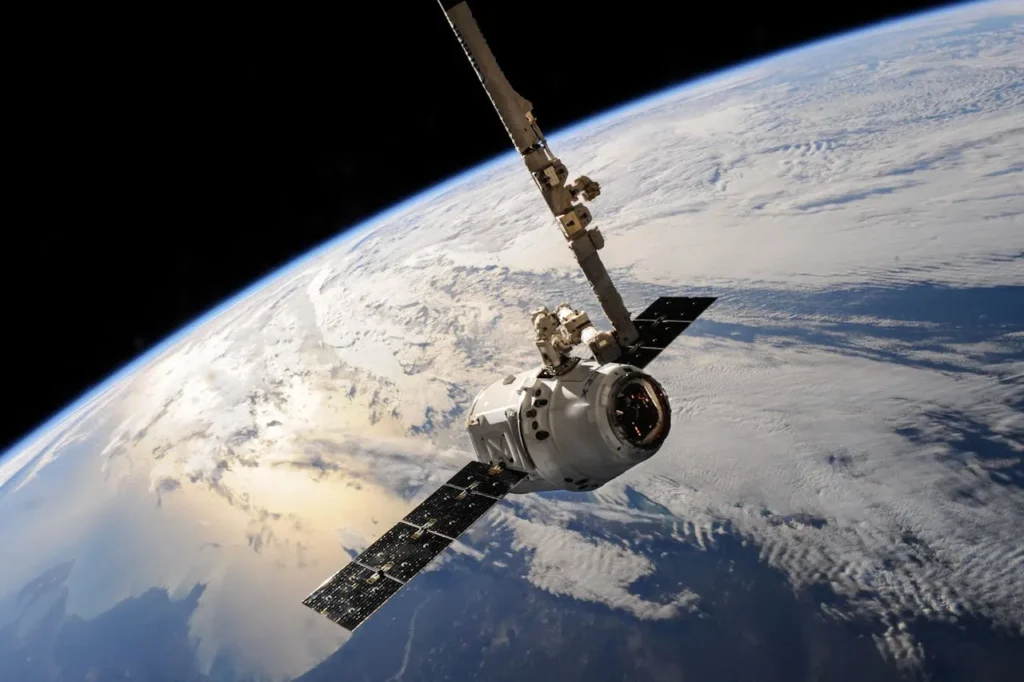
BlackSky to Expand Constellation for Enhanced Multi-Spectral Imaging
BlackSky Technology Inc. (NYSE: BKSY), a leading provider of real-time geospatial intelligence, has announced an ambitious new phase in the evolution of its satellite constellation. The company revealed plans to develop and deploy an advanced set of high-performance satellites, codenamed AROS, which will significantly expand its capacity for wide-area, high-cadence monitoring and data collection. Designed with multispectral imaging capabilities and large-area collection in mind, the AROS constellation is being tailored to support critical next-generation applications such as digital mapping at country scale, maritime domain awareness, 3D digital twin generation, and AI-powered geospatial analytics.
Expected to begin launching as early as 2027, the AROS system represents a leap forward from BlackSky’s existing Gen-3 satellites by combining broad-area imagery with high-frequency revisit capabilities. This integrated approach aims to meet rapidly growing market demand for timely, high-resolution data across government, defense, and commercial sectors.
Meeting a Critical Market Gap
As legacy earth observation satellites that have long supported large-area collection begin to reach the end of their operational lifespans, a capability gap is emerging in the market. Many of these aging systems are being replaced with satellites that, while modern, offer reduced collection capacities or narrower imaging capabilities. BlackSky sees this transition as a prime opportunity to introduce a disruptive alternative.
“With older large-area satellites aging out of service, there’s a growing need for a modern solution that delivers not only performance and agility but also affordability and readiness for artificial intelligence applications,” said Brian O’Toole, CEO of BlackSky. “We’re seeing strong demand from governments and commercial organizations alike who require persistent, fast-refresh visibility over vast regions. BlackSky is uniquely positioned to meet that demand.”
By combining high-resolution, broad-area collection with BlackSky’s hallmark rapid revisit rates, the AROS constellation is being purpose-built to deliver dynamic monitoring and change detection at a national and even continental scale.
Advanced Capabilities Tailored for the AI Era
The AROS satellites are being designed to collect proprietary, multispectral data that will feed a new generation of machine learning and artificial intelligence tools. These systems will provide insights far beyond traditional imagery, enabling customers to leverage predictive modeling, automated alerts, and real-time decision support.
The constellation will offer:
- Very high-resolution, multispectral imaging: Enabling wide-area mapping, change detection, and digital twin development with precise, context-rich visuals.
- Low-latency data transmission: Featuring optical inter-satellite links (OISLs) for high-bandwidth communication, facilitating rapid tasking and near-real-time delivery of data.
- Advanced data processing pipeline: A proprietary architecture designed to integrate seamlessly with real-time analytics, historical trend analysis, and AI model training environments.
- Cost-effective, scalable imaging: The system’s efficiency and automation will allow for routine, high-quality imaging of large geographies without sacrificing resolution or revisit rate.
These attributes make the AROS system uniquely suited for supporting modern intelligence workflows, especially in dynamic domains such as maritime security, natural disaster response, infrastructure monitoring, and economic activity tracking.
From Proven Heritage to Next-Gen Capabilities

The upcoming AROS constellation builds on BlackSky’s legacy of successful satellite development and rapid deployment. The system draws architectural inspiration and technical heritage from the company’s Gen-2 and Gen-3 platforms, which have demonstrated notable achievements in performance, reliability, and speed of commissioning.
BlackSky recently celebrated two successful back-to-back launches of its Gen-3 satellites. These missions set new benchmarks in the industry by achieving “first light” — the moment when a satellite captures its first image — in under 24 hours post-launch, and reaching full commissioning in less than 60 days. Such rapid turnaround not only demonstrates the maturity of BlackSky’s platform but also underscores its capability to scale quickly and efficiently in response to evolving customer demands.
The development of AROS also marks the first major initiative following BlackSky’s strategic acquisition of satellite manufacturer LeoStella. The acquisition has allowed BlackSky to vertically integrate its design and production capabilities, giving it greater control over development timelines and enabling faster innovation cycles. This in-house capability significantly reduces development risks while enhancing cost-efficiency — both of which are essential for scaling a next-generation constellation like AROS.
A Fully Integrated Intelligence Ecosystem
In addition to the hardware advancements, AROS will be fully integrated with BlackSky Spectra®, the company’s AI-enabled tasking and analytics platform. BlackSky Spectra delivers real-time geospatial insights by combining satellite imagery with advanced analytics, contextual overlays, and automated data delivery.
With AROS feeding high-resolution, multispectral data into this platform, customers will be able to task satellites on-demand, receive imagery within minutes, and process data through a suite of AI tools — all from a unified interface. This system-level integration allows for what BlackSky calls “dynamic tipping and cueing,” where broad-area search missions automatically direct follow-on observations or analytics to areas of interest — a critical capability for time-sensitive applications like disaster response or maritime surveillance.
A Platform for Scalable AI Applications
The new AROS architecture reflects a shift in the satellite imaging industry — from static, standalone image delivery to scalable platforms that support real-time situational awareness, continuous monitoring, and automated insight generation. The proprietary nature of AROS data means that BlackSky can offer unique datasets to train AI models, enhance algorithm performance, and drive innovative use cases across sectors.
In essence, AROS satellites won’t just collect imagery — they’ll power intelligent systems capable of detecting change, forecasting risk, and informing high-stakes decision-making processes. Whether for defense planners monitoring troop movements, insurers assessing flood impacts, or logistics operators tracking port activity, the applications are vast and expanding.
While the initial AROS launches are slated for as early as 2027, development has been underway for more than two years, with ongoing collaboration between BlackSky and its technology and development partners. The program is strategically timed to capitalize on shifting market dynamics and is positioned to become a core part of BlackSky’s long-term growth strategy.
“Our customers aren’t just looking for pictures from space,” added O’Toole. “They want answers — fast, accurate, and scalable. AROS is being built to deliver exactly that.”
By combining world-class manufacturing, proprietary data pipelines, AI-ready analytics, and real-time delivery, the AROS constellation represents more than an expansion — it’s a redefinition of what commercial satellite intelligence can be in the AI era.

